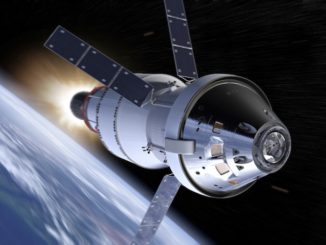
SpaceX has announced the upcoming test flight of its Starship rocket, scheduled for August 24, 2025. The mission, designated as Flight 10, will take place from the company’s launch facility in Starbase, located in southern Texas. This marks the tenth attempt to launch the fully integrated Starship, following a series of setbacks that have delayed progress in the ambitious program.
The launch window for the test flight opens at 18:30 CDT (19:30 EDT / 23:30 UTC). This flight will utilize the Ship 37 upper stage along with Booster 16. According to SpaceX, the objectives include expanding the operational capabilities of the Super Heavy booster and conducting multiple landing burn tests. Previous missions faced complications, and this upcoming test aims to build on those experiences.
Flight 10 is particularly significant as it will attempt to deploy a payload consisting of eight large flat objects, referred to as Starlink simulators. These simulators are designed to mimic the size of the next generation of satellites in SpaceX’s low Earth orbit broadband constellation. Additionally, the mission will test the relight of one of the Raptor engines during the coasting phase.
Despite ambitious plans, SpaceX has encountered challenges. The previous test flight, Flight 9, suffered multiple issues, leading to the loss of Ship 35 due to a failure in the main fuel tank pressurization system. A detailed assessment revealed a malfunction in the fuel diffuser, a component critical for managing gas flow and preventing excess heat transfer. This incident highlights the complexity of the technology involved in the Starship program.
Recent Setbacks and Testing Procedures
Flight 9, which took place on May 27, 2025, experienced a steady increase in methane levels within the nosecone shortly after stage separation. While the vehicle was able to complete its ascent burn, the unusual pressure dynamics compromised its control systems. As a result, the planned deployment of the Starlink simulators was unsuccessful, and the vehicle reentered Earth’s atmosphere in an uncontrolled manner.
In addition to the challenges faced during Flight 9, an explosion occurred on June 18, 2025, during ground testing of Ship 36. This explosion was attributed to an undetected failure in a composite overwrapped pressure vessel (COPV) in the payload bay section. In response, SpaceX has implemented new safety measures, including reduced operating pressures for COPVs and enhanced inspection protocols.
The company has also made modifications to its Orbital Launch Mount to facilitate testing while repairs are underway. Recent static fire tests conducted with Ship 37, including a six-engine test on August 3, 2025, have demonstrated progress, although the upcoming flight remains a critical juncture for the program.
Future Implications and Partnerships
The delays in the Starship program have significant implications, particularly for SpaceX’s partnerships with organizations like NASA. Following the setbacks, Elon Musk indicated that the Starship version 3, essential for deep space missions such as NASA’s Artemis program, is expected to debut later this year. However, consistent delays have raised concerns about meeting upcoming milestones.
NASA officials have reported that a demonstration for on-orbit propellant transfer is anticipated in the first half of 2025, a key milestone for the Artemis program. Lori Glaze, NASA’s acting associate administrator for Exploration Systems Development, emphasized the importance of monitoring SpaceX’s progress closely, especially given the complexities associated with cryogenic propulsion transfer.
Despite these challenges, NASA remains optimistic about SpaceX’s capabilities. Acting NASA Administrator Sean Duffy expressed confidence in SpaceX’s ability to learn from its setbacks and ultimately meet its goals. He reassured stakeholders that delays in Artemis 3 would not stem from SpaceX, reinforcing the company’s commitment to advancing the Starship program.
As SpaceX prepares for the tenth test flight, the aerospace community watches closely, eager to see if the company can overcome its recent challenges and achieve its ambitious objectives.






